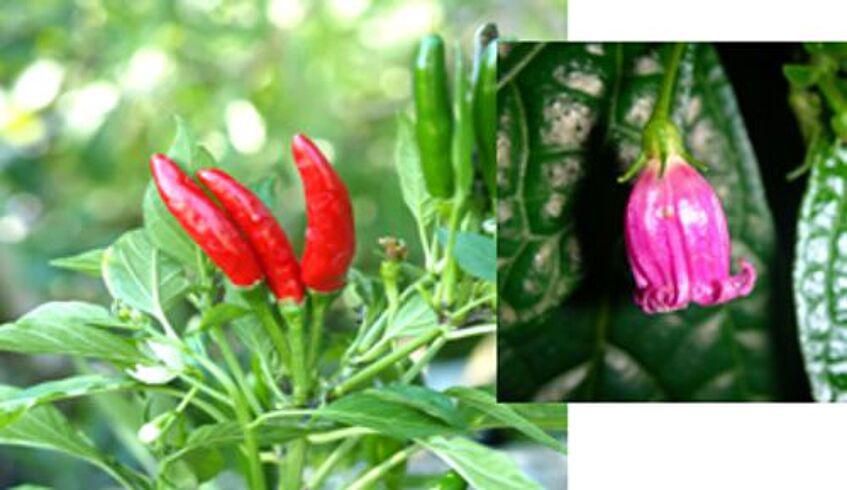WS 2018/19: Structural diversity in plants and fungi: from form to function
Optimized documentation and photography of bryophyte species
The aim of this project is to document features of bryophytes that are relevant for species identification. To this end, from up to five species macroscopic and light microscopic documentation will be made. The images will be optimized for the use in textbooks.
Supervisor: Ingeborg Lang
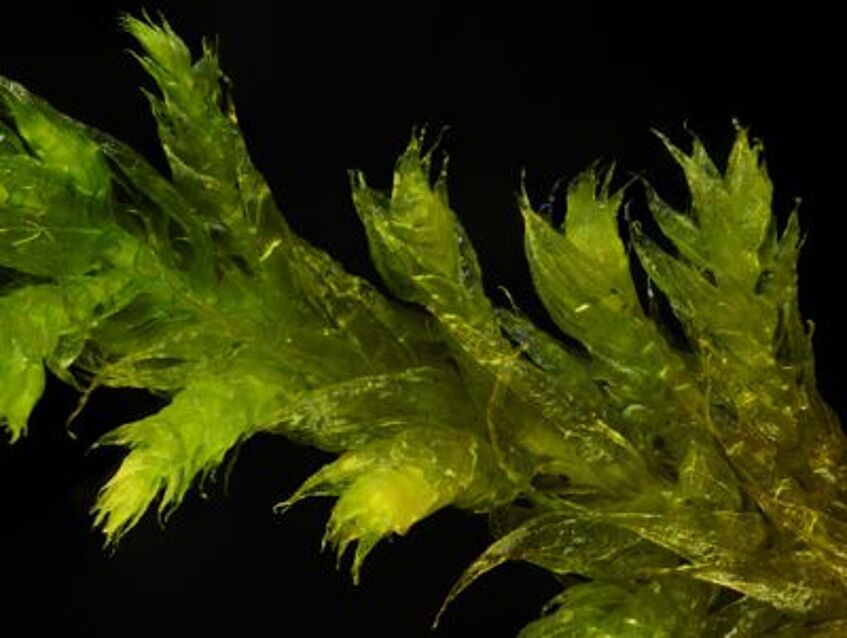
Structure and function of carnivorous plants
Carnivorous plants supplement their mineral nutrition by absorbing different species of nitrogen, phosphate, potassium, trace elements and small organic compounds from animals. For this aim, they have developed trap organs that carry glandular cells producing trapping mucilage and digestive enzymes. Also nutrient uptake often occurs via gland cells. Specific transporters serve for uptake into glandular cells of trap organs. Commonly, nutrients are engulfed by endocytosis. Yet, many questions still remain with respect to, for instance, morphology and anatomy of the traps, structure of the glandular systems, the production of attractants and signaling, the production of digestive enzymes, the uptake of digested proteins or the movement of leaves upon signals from animals.
Supervisor: Irene Lichtscheidl
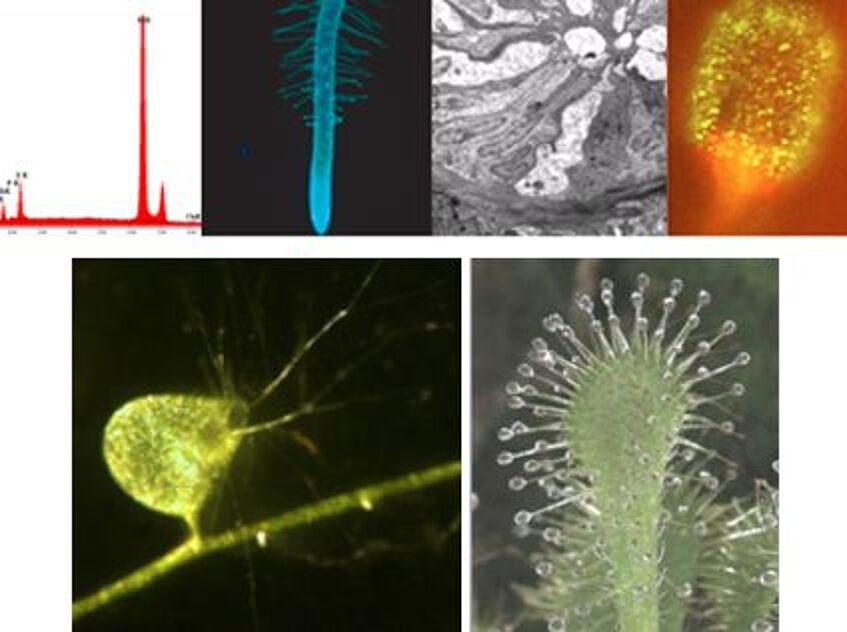
Pollen traces in fabrics
Palynology is a basic field in science and serves as an essential tool for many scientific disciplines, such as plant systematics, melissopalynology, forensic palynology. In this project, two questions related to forensic palynology will be addressed: (i) Does pollen caught in fabrics exposed outdoors reflect the surrounding environment? (ii) Do chemicals used for blood detection (Bluestar forensic) affect pollen walls?. Basic knowledge in Palynology is required.
Supervisor: Martina Weber
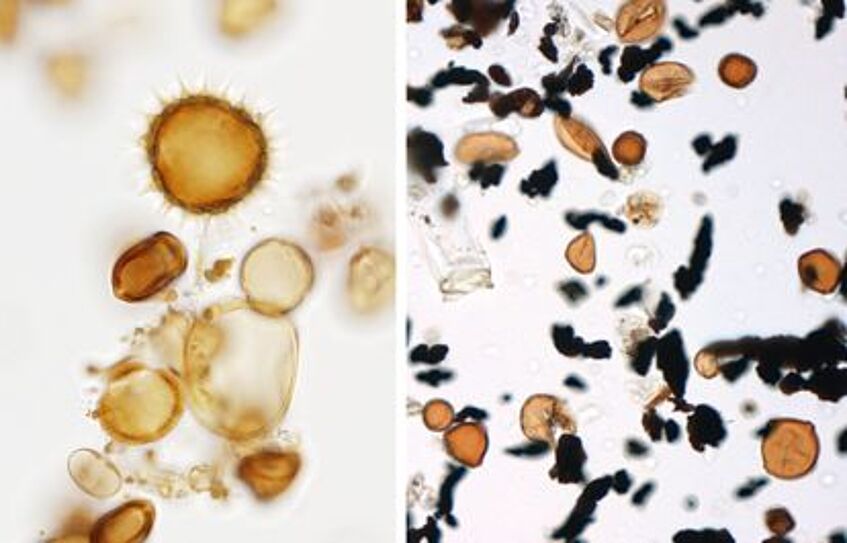
Plant adaptation along an elevational gradient
Plant adaptation along altitude is an evolutionary and ecologically interesting process, and offers a highly relevant model to understand plant responses to climatic changes. In Heliosperma pusillum (Caryophyllaceae), adaptation along altitude in the Southeastern Alps affects trichome density on stems and leaves of the plants (see photo). Using an NGS based method (small RNA sequencing) this project will investigate potential links between posttranscriptional regulation of gene expression and the development of this phenotypes..
Supervisor: Ovidiu Paun & Aglaia Szukala
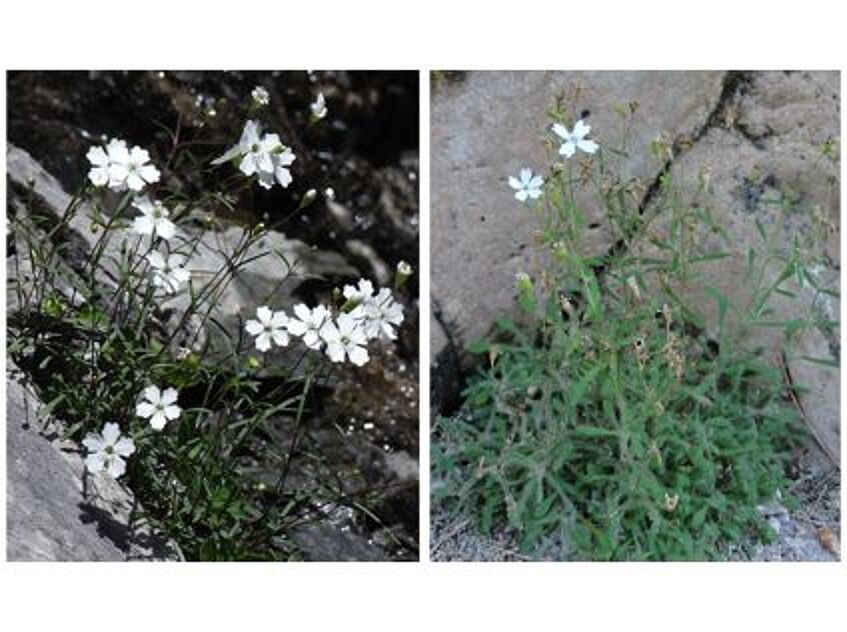
Structural traits in leaf domatia of Melastomataceae
Many species from different genera of the tribe Miconieae (Melastomataceae) develop leaf pouches (domatia). They are qualitatively distinct organs derived from modifications of the leaf lamina and allow obligate mutualisms with ants. The leaf pouches are either used as nesting space or as waste chamber. The ants have a significant anti-herbivorous effect and in return the host-plants receive nutrients from debris stored in the domatia. During this project we will investigate whether different use of the leaf pouches (nesting space or waste chamber) leads to different structural adaptations or whether structural prerequistes lead to the decision of the ants how to use the pouches. To this end, using microscopic and computer tomographic methods the difference between leaf lamina, nesting pouche and waste pouche of Clidemia, Conostegia, and Tococa species will be analyzed with respect to anatomy, surface structure of the inner walls, as well as size and compartmentalization of the leaf pouche cavity.
Supervisor: Veronika Mayer
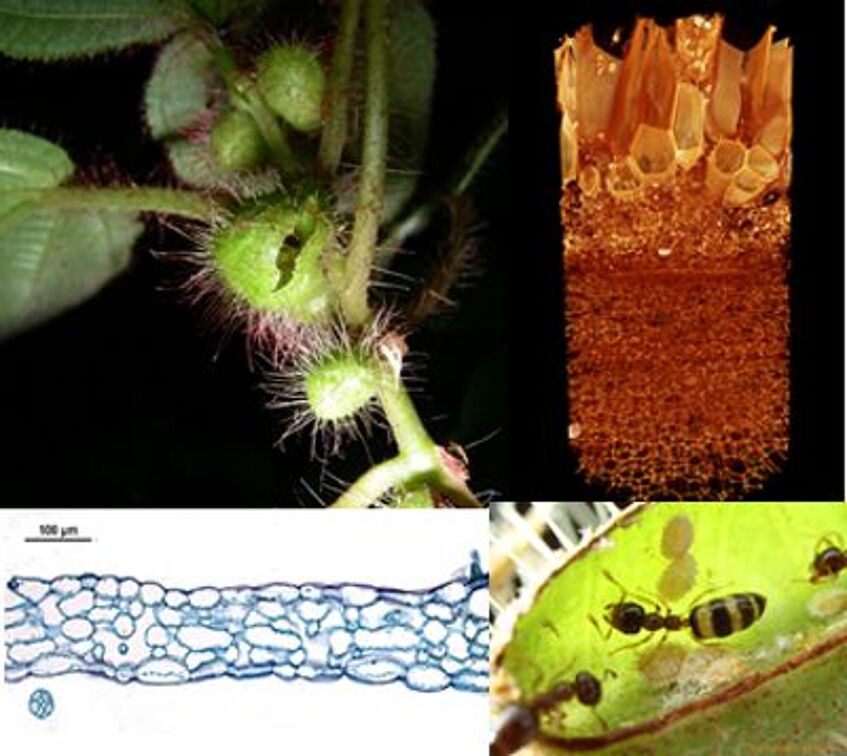
Influence of Zn(II) atmospheric deposition on different genotypes of the moss Atrichum undulatum
Environmental contamination is a major challenge of our time. Here, we focus on the moss Atrichum undulatum and simulate atmospheric deposition of zinc. Zinc tolerance will be analysed by the intracellular localisation of zinc on the microscopic level as well as by chromosome number and genome size using flow cytometry and classical cytology.
Supervisors: Ingeborg Lang & Hanna Weiss-Schneeweiss
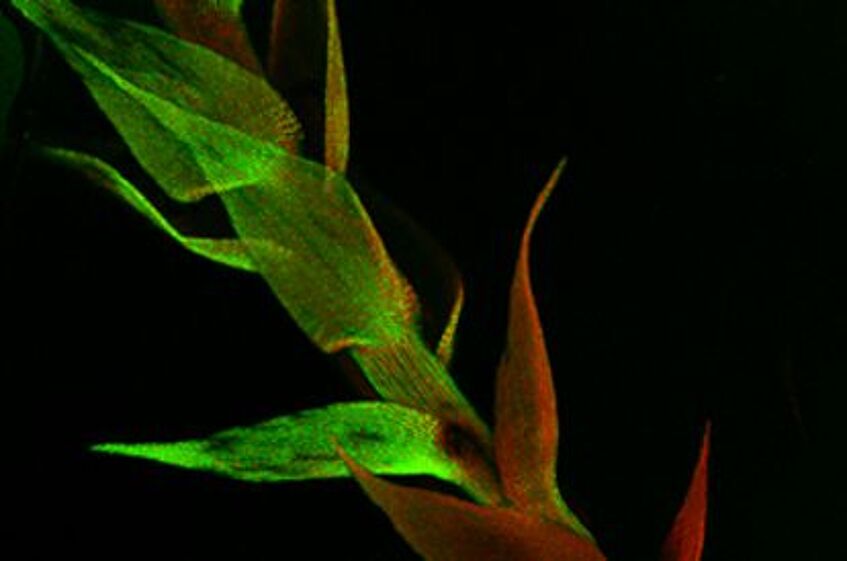
Environmental stress factors: heavy metals
Metals occur naturally in soil, and soil becomes polluted due to anthropogenic activities. Many of these metals are important micro-nutrients, but all become toxic if they are in too high concentrations. Some plants, however, have developed strategies to deal with this difficult environmental situation. Main topics of interest in this context are the interaction of plants and soil microbes, the localization of endophytic fungi and bacteria, and uptake and distribution of heavy metals in plants.
Supervisor: Irene Lichtscheidl
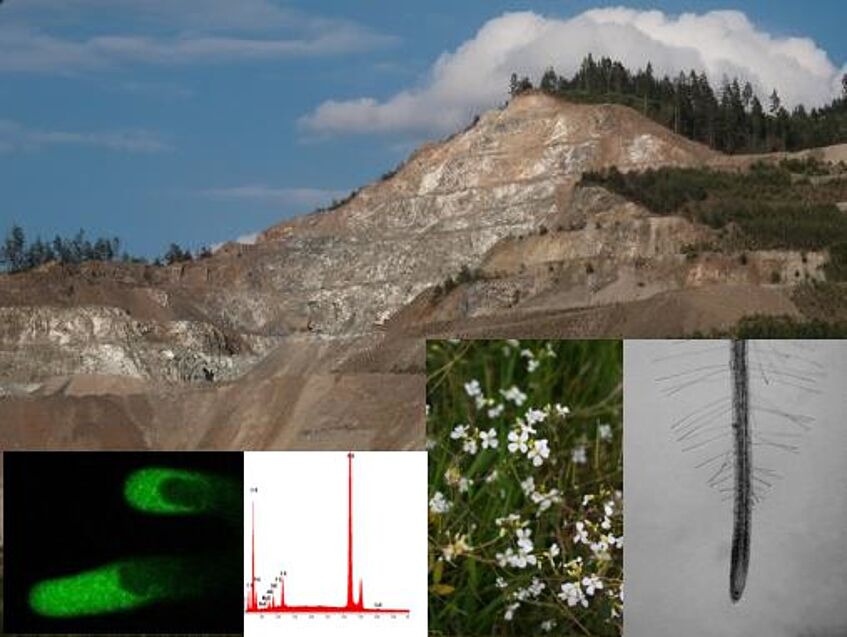
Evolution of pungency in chile peppers (genus Capsicum)
Chiles (Capsicum spp., Solanaceae) are well-known vegetables and spices consumed worldwide. Most varieties belong to just three cultivated species, but the genus includes around 30 wild species native to Central-South America. The most remarkable feature of the genus is the pungency/hotness of the fruits due to the presence of a group of alkaloids knowns as capsaicinoids. In the course of this project, the content of capsaicinoids in cultivated and wild Capsicum species will be analyzed and the gene Pun1, one of the key genes related to pungency, will be studied.
Supervisors: Hanna Schneeweiss & Johann Schinnerl
